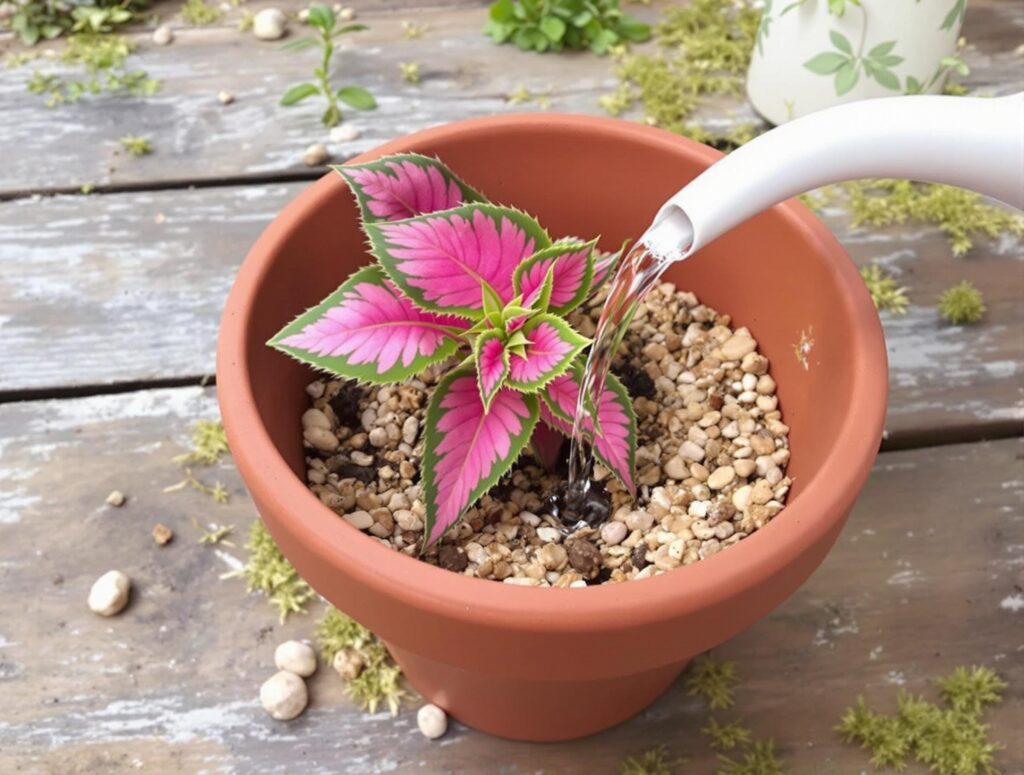
Introduction
Learning how to grow Tradescantia Nanouk can transform your indoor space with its vibrant, striped foliage. This stunning houseplant requires specific care to thrive. This comprehensive guide will walk you through every step, from propagation to maintenance, ensuring your Tradescantia Nanouk flourishes.
Understanding Tradescantia Nanouk

Tradescantia Nanouk is a cultivar of the Tradescantia genus, known for its striking pink and green striped leaves. Native to Central and South America, this plant has gained popularity for its ease of care and beautiful appearance. It belongs to the family Commelinaceae and is often referred to as the Fantasy Venice plant due to its unique foliage. For more detailed information on Tradescantia Nanouk care, you can visit Gardening Know How.
Ideal Growing Conditions

Light Requirements
Tradescantia Nanouk thrives in bright, indirect light. Avoid direct sunlight, as it can scorch the leaves. Indoors, place your plant near a north-facing window or a few feet away from a south-facing window. Outdoors, provide partial shade, especially during the hotter months. For more tips on gardening in warm weather, check out our guide on the best summer flowers for warm weather.
Temperature and Humidity
This plant prefers temperatures between 65-75°F (18-24°C) during the day and can tolerate a slight drop at night. High humidity is beneficial, so consider misting the plant or using a humidity tray. For general indoor plant care tips, check out The Spruce.
Soil Type and pH Levels
- Use well-draining soil with a pH between 6.0 and 7.5.
- A mix of peat moss, perlite, and potting soil works well.
- Ensure the soil is moist but not waterlogged.
Propagation Techniques

Propagating Tradescantia Nanouk is straightforward and can be done through:
- Stem Cuttings: Cut a 4-6 inch stem with several leaves and place it in water or moist soil.
- Division: Separate the plant at the root ball and replant the divisions.
- Layering: Bend a stem and bury a section of it in soil until it roots.
For detailed steps on propagating houseplants, visit Houseplant Journal.
Planting and Initial Care

- Choose a pot with drainage holes to prevent root rot.
- Use a well-draining soil mix.
- Plant the cutting or division at the same depth it was previously growing.
- Water thoroughly and place in indirect light.
Watering and Fertilizing

- Water when the top inch of soil is dry.
- Use a balanced, water-soluble fertilizer every 4-6 weeks during the growing season.
- Reduce watering and fertilizing in winter.
Pruning and Maintenance
- Prune to encourage bushier growth and remove any dead or yellowing leaves.
- Regularly check for pests and diseases.
Common Pests and Diseases
- Pests: Watch for spider mites, mealybugs, and aphids. Treat with insecticidal soap or neem oil.
- Diseases: Prevent root rot by avoiding overwatering. Treat fungal infections with a fungicide.
Troubleshooting Common Issues
- Yellowing Leaves: Often due to overwatering or low light.
- Wilting: Usually caused by underwatering or high temperatures.
- Slow Growth: May be due to insufficient light or nutrients.
Encouraging Bushier Growth
- Pinch back the tips of the stems to promote branching.
- Provide adequate light and fertilizer.
Repotting Tradescantia Nanouk
- Repot every 1-2 years or when the plant becomes root-bound.
- Choose a pot one size larger and use fresh, well-draining soil.
FAQs
- How often should I water my Tradescantia Nanouk? Water when the top inch of soil is dry.
- Can Tradescantia Nanouk grow in low light? It prefers bright, indirect light but can tolerate low light.
- Is Tradescantia Nanouk toxic to pets? It is non-toxic to cats and dogs.
- How do I propagate Tradescantia Nanouk? Use stem cuttings, division, or layering.
Conclusion
Growing Tradescantia Nanouk into a lush, thriving plant is achievable with the right care. By providing ideal growing conditions, proper watering, and regular maintenance, you can enjoy the beauty of this stunning houseplant. Happy gardening!
For more gardening tips and ideas, explore our guides on creeping thyme lawns and beautiful plants that attract bees and butterflies.